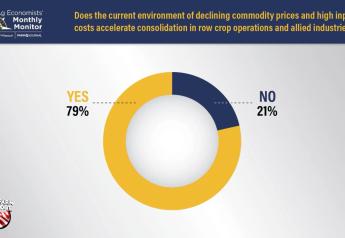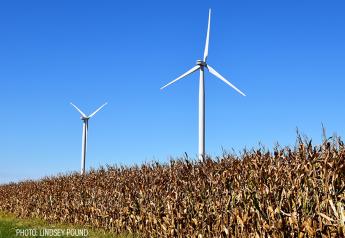Farmland Income Return Shows Modest Gains
An index that pension funds use reflects stabilization in farmland values across the nation, but it still shows weakness in Midwestern values. The Farmland Index, updated quarterly by the National Council of Real Estate Investment Fiduciaries (NCREIF), shows the total return on farmland for the second quarter of 2017 was 1.63%. That’s up from a return of 0.49% in the first quarter and up from 1.25% in the second quarter of 2016. The quarterly return consisted of a 0.57% income return and 1.06% appreciation.
Although agricultural prices remain under pressure, the farmland income return managed modest gains in the first half of 2017, at about 0.5% per quarter, similar to the income returns in the first half of 2016, NCREIF reports. Farmland appreciation had its best performance since the fourth quarter of 2015 after slight depreciation last quarter.
The trailing annual total farmland return was 6.55% through the second quarter of 2017, compared to 9.68% for the year ending in the second quarter of 2016. The annual total return included a 5.18% income return and 1.32% appreciation.
Cropland Returns by Type
 Over the trailing year, permanent cropland returned 8.63%, compared to 4.90% for annual cropland. © LandOwner |
The gap between permanent and annual cropland narrowed in the second quarter with quarterly total returns of 1.67% for annual cropland and 1.56% for permanent cropland. Annual cropland slightly outperformed this quarter with a stronger income return, at 0.87%, compared to only 0.17% for permanent cropland. Yet permanent cropland appreciation, at 1.39%, outpaced the 0.80% achieved by annual cropland.
Over the trailing year, permanent cropland returned 8.63%, compared to 4.90% for annual cropland. Meanwhile, the total annual return from cropland has held relatively stable since declining to the 5% area, which was last seen in early 2015 and is about even with returns noted in late 2009 and early 2010.
Although all regions had positive total returns in the second quarter, performance varied widely. Two regions—Pacific West and Pacific Northwest—had solid appreciation of 1.49% and 6.23%, respectively. For the Pacific Northwest, this supported the strongest quarterly total return across the regions at 7.05%.
Two other regions—Southeast and Southern Plains—were the only areas with income returns above 1%, at 2.14% and 1.09%, respectively. Slightly positive appreciation also occurred in both of these regions.
Weak Regions
The depreciation trend continued in the Corn Belt and Lake States for small total returns, while the Mountain States also experienced slight depreciation of 0.05% for the quarter.
The NCREIF Farmland Index consists of 705 investment-grade farm properties (467 annual cropland properties and 238 permanent farmland properties), totaling $8.1 billion of market value. The index features 222 properties in the Pacific West, 175 in the Corn Belt, 79 in the Delta States, 60 in the Mountain States, 57 in the Pacific Northwest, 40 in the Southeast, 36 in the Lake States and 20 in the Southern Plains.
Want more farmland news? Subscribe to LandOwner Newsletter, a must-have resource for both farmers and landlords.







